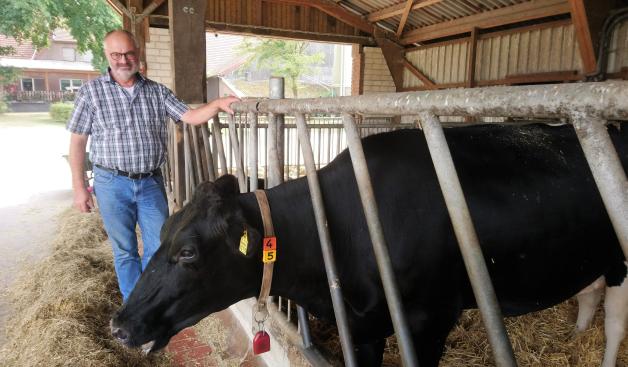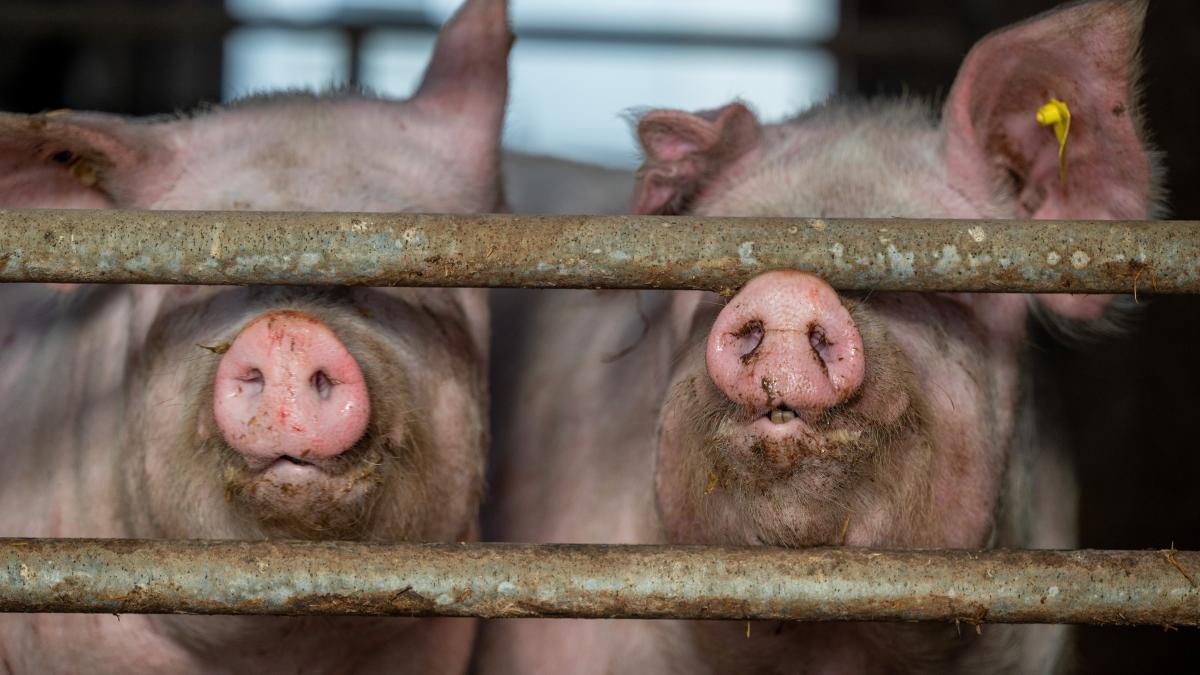According to the president of the Emsland Breeders’ Association, Georg Meiners, the Emsbüren farm affected by African swine fever is an “exemplary farm” in the sector: “After the first animals were obviously sick and died, the farmer became is immediately entrusted to his veterinarian and immediately informed the district veterinary office “.
The president of Emsland Landvolk, Georg Meiners, praises the behavior of the veterinary offices of Emsland and Bentheim County. In Nordhorn, both districts jointly operate an animal disease logistics center.
Photo: dpa / Friso Gentsch
In this crisis, the president of Landvolk also commends the two responsible veterinary offices in the districts of Emsland and Bentheim County: “Both worked well and the stock clearance went well too.”
However, according to Meiners, the situation in the stables in the ten-kilometer surveillance zone is now dramatic and life-threatening. Too few animals are simply slaughtered. As a result, the fattening pigs have been in the stalls for too long, need to be fed additional and are therefore too large for the stalls. Consequently, there is not enough space to accommodate new piglets.
“And each pig needs about three kilograms of feed every day. This alone costs around € 1.20 per day per animal, ”explains Meiners, who stopped fattening pigs just six months ago and specializes in dairy cows.
The president of Emsland Landvolk, Georg Meiners, calls on his colleagues to insure themselves against the consequences of, for example, a swine fever epidemic.
Photo: Carsten van Bevern

At the same time, animals that are too large and heavy are no longer billed as fattening pigs at € 1.93 per kilogram, but at the price per sow of 95 cents per kilogram. “The loss is huge. However, the animals in the surveillance zone are currently billed at 0 euros “.
In this case, however, farmers can protect themselves with insurance against damage resulting from animal diseases. Loss of livestock income due to disease, theft or accident can quickly threaten their existence.
Sometimes very high damage amounts to insurers
But: According to the Emsland country folks, “only” about 70 percent of the companies in the surveillance zone have such insurance. Meiners specifies that about 80% of affected sow farms and 50% of fattening farms have such insurance: “I recommend that all colleagues learn from the current situation and take out such insurance for future events.”
Insurers would continue to accept new customers. Meiners: “Although now they will certainly recalculate the prizes. Insurers did not expect that they would now have to pay some very large claims. ”
Annual costs: 1000 euros upwards
This could make insurance more expensive. According to a comparison portal for insurance companies, companies with several hundred animals currently face annual costs in excess of € 1,000, with a deductible of between three and six percent per claim. And that against the background that fattening farms are currently struggling to make profits, according to the president of the Landvolk.
Meiners: The price of pork does not cover costs
Why: “The price paid to fatteners for one kilogram of pork has risen relatively significantly in recent months from € 1.20 at the end of 2021 to € 1.93 today. At the same time, however, the costs have also increased significantly. For example for feed and energy. And the price of fertilizer, which is needed for feed production, has even tripled, “explains Meiners. Currently, not many companies can work just to cover their costs.
According to Meiners, fatteners only have to pay very low prices for piglets: “As a result, however, piglet farms are currently experiencing major economic problems. We have to go back to the point where all the companies involved in the production can operate in a reasonable way ”.


